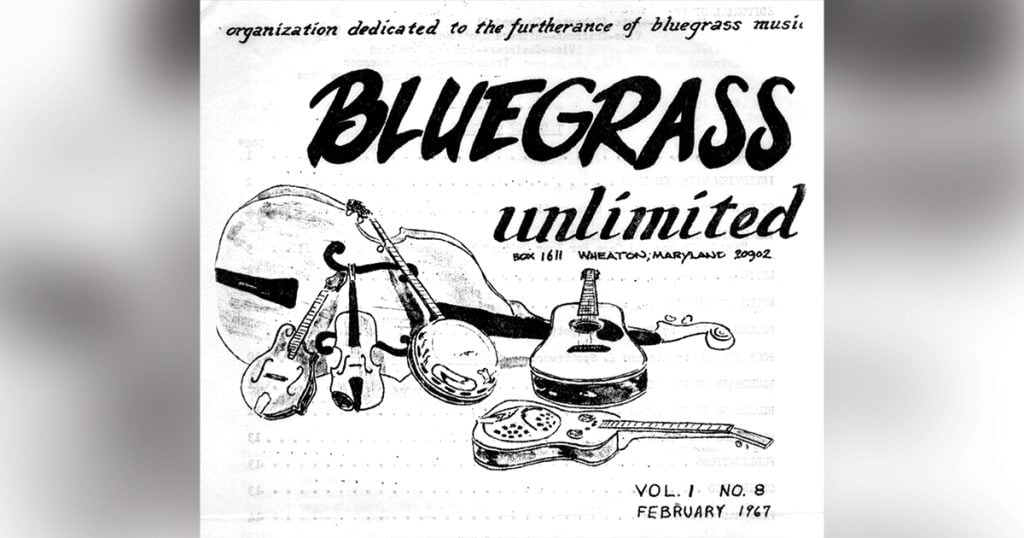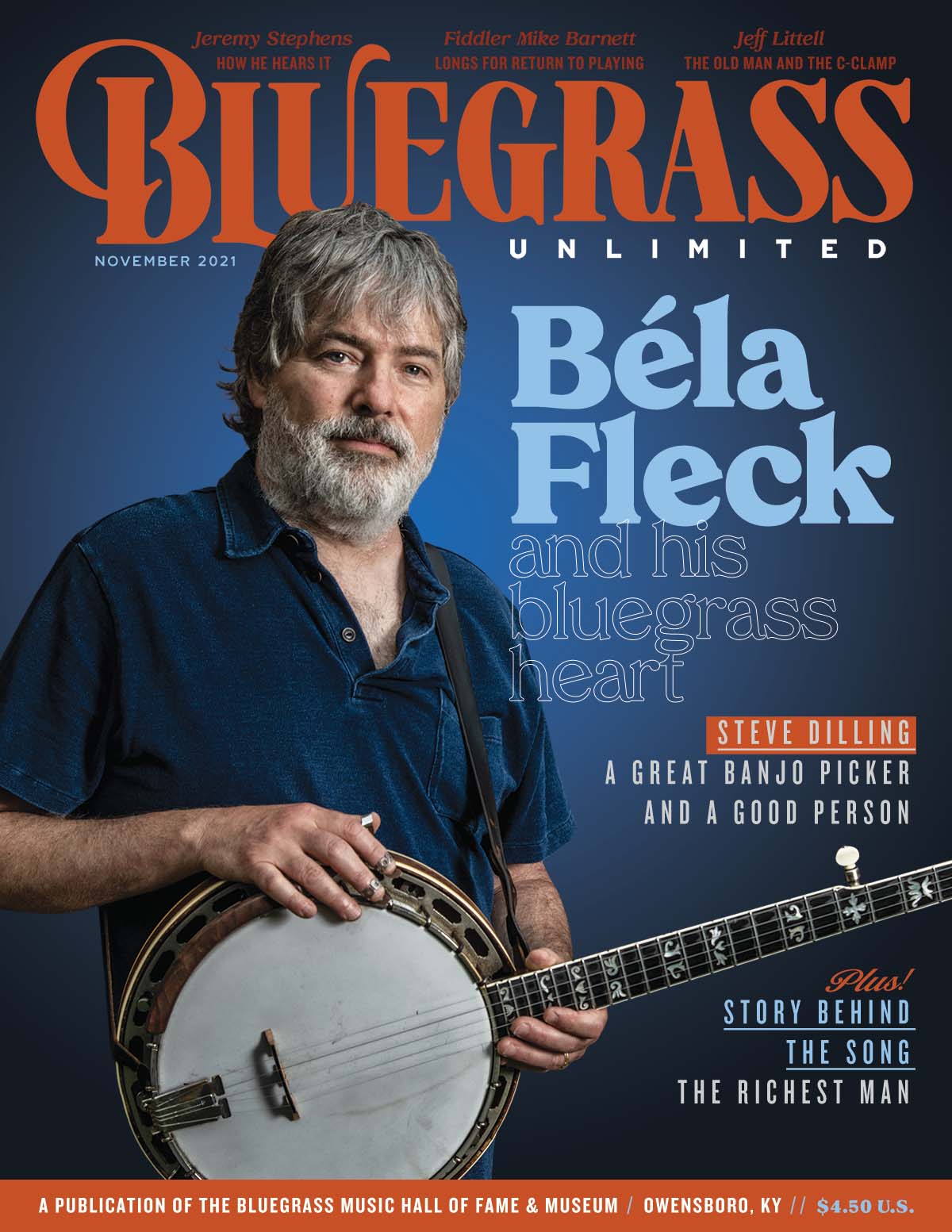Home > Articles > The Archives > Starvin’ to Death
Starvin’ to Death
Reprinted from Bluegrass Unlimited Magazine
February 1967, Volume 1, Number 8
“You know, the best music that bluegrass musicians ever played or recorded seems to have been when they were starvin’ to death.” This comment was made to me by my good friend the late Don Owens of WAKL/WAVA, in Arlington, Virginia once while we were discussing the music. Though it slightly took me aback when I heard it, coming from a person who had been playing bluegrass records and pushing the music when no one else would, it made me think that maybe he might have a good point. Don did not make the statement in criticism at all, but as a person who had seen it happen.
The comment caused me to start wondering and the more I thought about it the more he seemed to be right. I think that it is something that bears serious thought when people are talking about the “state of the art” in bluegrass music today.
It seems to me that among friends, fans, promoters and musicians there is a strong preference to the music that the bluegrass artists recorded from the period of 1947 through 1955 when they were mostly “starvin’ to death”, as Don Owens put it.
I must admit that I prefer this period myself. Recordings of songs like “Roll In My Sweet Baby’s Arms” by Lester Flatt & Earl Scruggs, “Will You Be Loving Another Man” by Bill Monroe, “Hit Parade Of Love” by Jimmy Martin, “The Fields Have Turned Brown” by the Stanley Brothers, “Old Salty Dog Blues” by Flatt & Scruggs, “I Wonder How The Old Folks Are At Home” by Mac Wiseman still form the basic repertoire for bluegrass bands. How many of the local musicians in any area are heard doing the songs that the bluegrass greats are putting out nowadays? I think that you will find a preference across the country of almost ten to one, for the recordings made in the ’47-’55 period or the “starvin’ to death” period as Don put it.
What caused this great sound that groups had in this period? While it is only my individual opinion, there are quite a few points I should like to make. First, the various groups were much more aware of a total band togetherness. This may not have been a conscious thought but I think that it was something they felt in their music. Their singing was more closely felt and there was less emphasis on individual musical prowess. Musicians were more aware of how they sounded as a group and consequently they strived to attain a closer sound. They listened to and absorbed what other members were playing and it showed in the music. These same groups also expressed themselves more honestly through their music than they do today since they were not quite so aware of the monetary gains derived from their efforts. I believe that most people will admit that even though bluegrass music has a strong tradition, it is one of the most individual styles of music known in the United States today. This individualism is not especially in each person’s individuality but mere directly in the expression of emotion through music. This may be the key to Don Owens’ remark.
There is no such thing as a written musical arrangement to the older bluegrass records. In fact, there is virtually no pre-planning of what is going to be played other than a fiddle break here, banjo break there and a vocal trio on the chorus. They said to each ether: “just get up to the mike and give it all you’ve got”. This approach created an atmosphere of spontaneity and musical sincerity which is missing from many bluegrass records of today. Also absent from these earlier recordings was the outside commercial record influence in the form of “session men” the recorded background musicians in what is called “country” music today. The bluegrass bands back then were playing the real thing, with no horns, drums or electric guitars and they were proud of it. Though, like anybody else, they would have enjoyed making a hit, it didn’t seem that this was the most important thing on their minds. Their musical attitude was “say something musically, and if it sells all the better”. Not “is it on the charts yet?”
This brings me, for better or worse, to the current state of the music. It seems that there are not very many creative individuals or groups recording today. Most of the current crop of records lack that fire and drive present 10 to 15 years ago. There have been some exceptions, such as Bill “Brad” Keith, some of the Country Gentlemen’s records (such as “Bringing Mary Home”), Jimmy Martin (in one of his “down home” moods at a session), The Kentucky Colonels (Country Boys) (now disbanded I hear), and a few others. But on the whole, it seems that bluegrass music has been experimenting with both instrumentation and material, and not really pulling either one off very well. I don’t want to point the finger directly at the musicians since I realize that much of this experimenting is promoted by the A & R people at the record companies trying for that “hit”. But it does seem that the music itself is not helped much by this. A lot of the experimenting which doesn’t come across on records isn’t perfected in terms of the total band sound, and the end result shows it.
There seems to be a strong emphasis on the individual technical accomplishments of each musician in bluegrass recently and I think this is wrong. A good musician is always respected, but the effect of a fancy run or hot lick is lost when it isn’t coordinated with what the rest of the band is playing. I’ve heard many recent records and thought while listening, “that’s a good mandolin break, but where’s the rest of the group?” Even along singing lines, it has been my observation that harmony singers do not spend enough time learning the right part. Possibilities in harmony should be explored until exactly the right combination of parts is achieved. A suggestion: work out the singing parts first in rehearsals using just guitar for accompaniment until all parts sound right. The final results will be well worth it.
I’m also sorry to comment that it seems that too many of the standard groups in bluegrass have the attitude of “Oh well, it was kind of sloppy, but we’ve got ANOTHER HIT RECORD”. It still doesn’t sound to me like good music. A little thought and a lot of work would help.
There is a sad lack of original material in bluegrass today. Even though most records might have new songs on them, they usually sound as if the band hadn’t heard the song before they walked into the studio. I have found that there is a great deal of material that lends itself to fine bluegrass songs if you just go out and look for it. Songs can be drawn from everywhere, even including the Beatles, witness the recent Elektra album by the Charles River Valley Boys. But always remember to play it ’grass. Another example is a song recorded recently by a group called the “Boys from Shiloh”. It is “Dear Heart”, and for those of you that might not know, is from a Broadway musical and written by Henry Mancini. Its a fine record and good bluegrass. But a lot of bluegrass groups sound LAZY on their recent recordings. They sound as though they couldn’t care less if the music they play is good or not. It is a sad state of affairs when our music is played this way.
As with any art form, things don’t always come easy. You must put something into music to get something out of it. Many great records were made in the days when bluegrass musicians were “starvin’ to death”. But even if they were hungry they surely decided to put their heart and soul into what they were playing.

